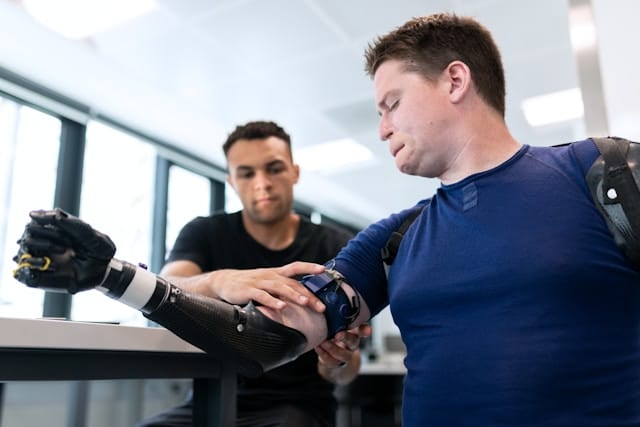Can Real-Time Biometric Data Monitoring Enhance Performance in Competitive Sports?

In the era of digitalization and technological advancement, numerous industries have employed the use of real-time data to drive performance, improve efficiency, and predict future outcomes. One of the sectors that have experienced a significant transformation due to this trend is sports. For several decades, sports teams and athletes have been on a continuous quest to gain a competitive edge, improve performance, and mitigate injuries. The emergence of real-time biometric data monitoring brings a new dimension to this quest. This article will explore the effects of real-time biometric data monitoring on the performance of athletes and competitive sports in general.
The Intersection of Sports and Technology
The intersection of sports and technology has resulted in innovative solutions geared towards enhancing performance, health, and overall success in sports. Biometric data collection and monitoring is one such innovation. This technology involves the use of wearable devices and sensors that track and analyze an athlete’s biological and physical data in real-time.
A lire aussi : How Can AI-Powered Analysis Offer Insights into Reducing Air Pollution in Cities?
These devices collect various essential data points, including heart rate, temperature, speed, strength, and even sleep patterns. The data collected provides valuable insights into an athlete’s health and performance, identifying areas for improvement, potential health risks, and optimizing training regimes.
Biometric Data Monitoring: An Athlete’s New Companion
The utilization of biometric data monitoring devices is increasingly becoming a norm in the sports industry. Athletes, both professional and scholar, now incorporate these devices into their training routines.
A lire en complément : What’s the Latest in Organic Electronics for Flexible and Sustainable Gadgets?
These wearables, usually in the form of wristbands, smartwatches, or chest straps, contain sensors that capture an array of biometric data. For example, heart rate monitors provide real-time data on an athlete’s heart rate, both at rest and during exercises. This data is crucial as it helps identify overtraining, undertraining, and potential heart-related health issues.
Similarly, other devices monitor body temperature and hydration levels, vital for athletes training in different environments. For instance, athletes training in high-temperature environments may be at risk of heat-related illnesses. Real-time temperature and hydration data can help mitigate such risks.
The real-time aspect of these data collection and monitoring systems is essential. It allows athletes and their trainers to make immediate adjustments to their training routine, based on the data received.
Leveraging Biometric Data for Performance Enhancement
Biometric data is not just about health monitoring. It provides a wealth of information that can be leveraged to enhance athletic performance. By analyzing data collected, athletes can understand their bodies better, recognize their strengths and weaknesses, and tailor their training accordingly.
To illustrate, consider an athlete who aims to improve their speed. By wearing a device that tracks their speed during training, they can receive real-time feedback on their performance, allowing them to make immediate adjustments to their technique or effort level. Over time, such feedback can lead to significant improvements in performance.
Similarly, strength and conditioning coaches can use this data to develop personalized training programs for athletes. By understanding an athlete’s current fitness level, they can create a plan that targets specific areas of improvement, reducing the risk of injury and optimizing performance.
The Future of Biometric Data in Sports
The future of sports is undoubtedly linked with technology, and biometric data monitoring is at the forefront of this revolution. As technology continues to evolve, so too will the capabilities of these systems.
Companies are already developing more advanced wearable devices, capable of monitoring a broader range of biometric data. For example, some devices are being designed to track brain activity, providing insights into an athlete’s mental state during competition and training.
Furthermore, the integration of artificial intelligence and machine learning into these systems could offer even more significant benefits. These technologies can analyze large amounts of biometric data in real-time, identifying patterns, and making predictions that could potentially enhance an athlete’s performance or predict injuries before they occur.
In conclusion, the real-time monitoring of biometric data presents an exciting opportunity for competitive sports. It offers a new way to understand athletes’ health and performance, providing valuable insights that can be used to enhance training and competition outcomes. As technology continues to advance, the possibilities for biometric data in sports appear limitless.
Injury Prevention and Early Detection through Biometric Data
A notable benefit of biometric data monitoring that deserves mention is its role in injury prevention and early detection. With the advent of wearable technology and real-time data collection, sports biometric technology provides the tools necessary to identify possible injury risks before they materialize.
Biometric technology monitors athletes’ physiological parameters during training and competition. For instance, heart rate monitors and other wearable devices provide data that can indicate an athlete’s readiness for high-intensity activities. Simultaneously, wearable devices can provide feedback that may warn athletes of impending overexertion or fatigue, both of which are significant factors in injury occurrence.
On another level, these devices can monitor an athlete’s movement patterns and biomechanical loads to identify abnormal movements, which can predispose an athlete to injuries. By providing this information in real-time, athletes and coaches can make immediate adjustments to prevent injury.
Additionally, data collected from these devices could be used as a research tool. For example, analysis of these data using machine learning techniques could help identify injury risk factors, leading to improved prevention strategies. In fact, this concept is already being explored in academic circles, with studies published on platforms like Google Scholar and PubMed detailing the potential use of wearable sensors for injury prevention in sports.
Real-Time Biometric Data Monitoring: A Game Changer in Sports Betting
The impact of real-time biometric data extends beyond the athletes and training ground. It’s making waves in the world of sports betting too. Real-time data collected from athletes can provide valuable insights that could significantly influence sports betting odds and strategies.
Sports betting has always relied on previous performance statistics and current form to predict future outcomes. However, with the introduction of real-time biometric data, bettors now have access to a new layer of rich, predictive information.
By providing an in-depth view of an athlete’s physiological condition and performance potential, bettors can make more informed decisions. For instance, data on an athlete’s heart rate, hydration levels, or fatigue indicators can offer clues about their performance in a game or event, influencing betting odds and strategies.
It should be noted that the use of such data in sports betting raises ethical and privacy concerns. Regulatory bodies, sports organizations, and data labs are therefore tasked with developing and enforcing rules that protect the privacy and rights of athletes while ensuring fairness in the betting industry.
Conclusion
The intersection of sports and technology, particularly the use of real-time biometric data monitoring, is revolutionizing the world of competitive sports. From enhancing athlete performance and training programs to injury prevention and even influencing sports betting, the potential applications of these technologies are vast. As we continue to explore and refine these systems, we can expect even greater advancements in our understanding of athlete performance and health. Ultimately, the future of sports may very well be dictated by the seamless integration of human athleticism and technological innovation.
